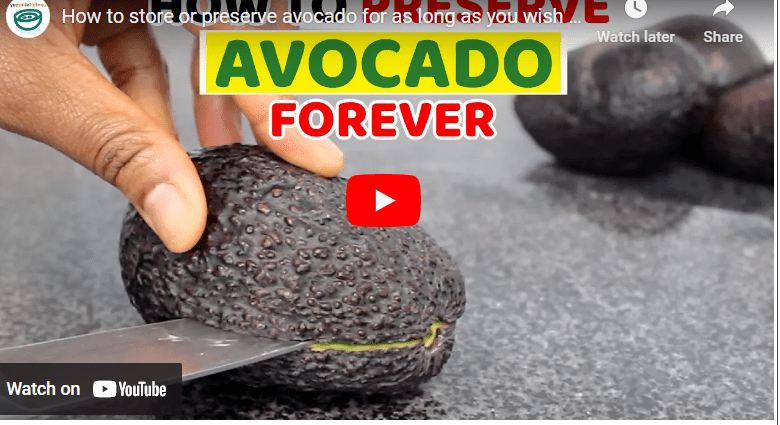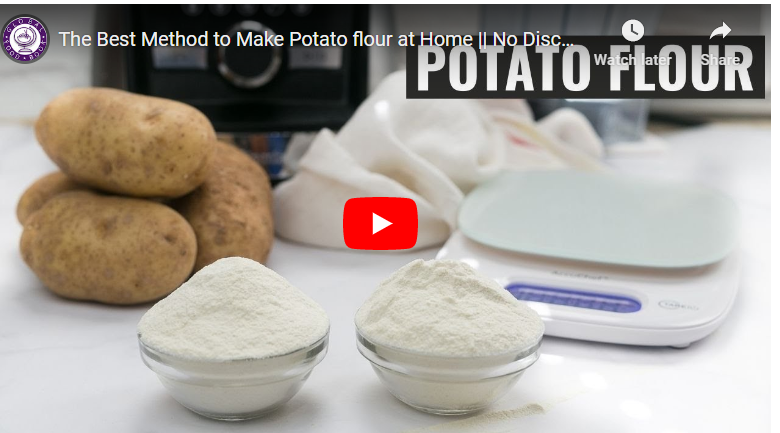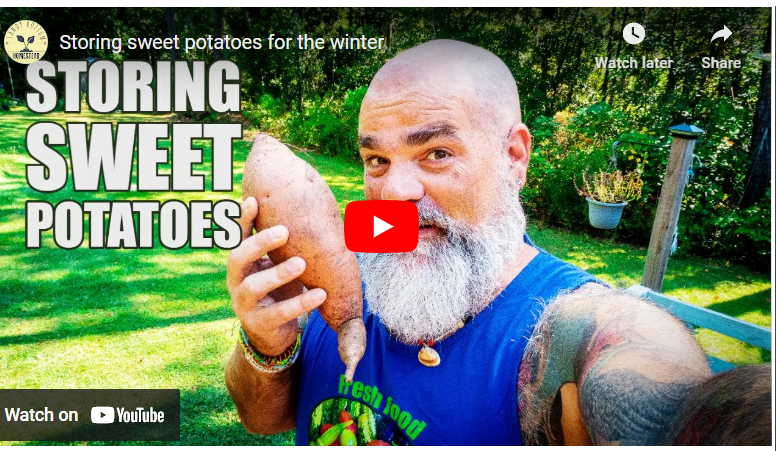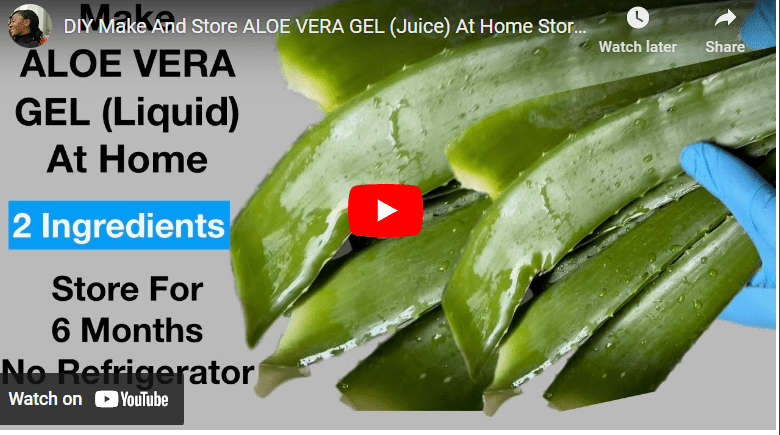Tomatoes are a versatile and nutritious fruit that can be used in a variety of dishes. From salads to soups to sauces, tomatoes are a staple ingredient in many cuisines around the world.
Whether you grow them in your garden or purchase them at the grocery store, processing tomatoes can help you make the most of their flavor and extend their shelf life.
There are several methods of processing tomatoes, including canning, freezing, and making tomato sauce, each with its own benefits and drawbacks.
In this article, we will explore the different ways to process tomatoes, providing step-by-step instructions and tips for storing your processed tomatoes.
How To Process Tomatoes Step By Step Guide
Fresh tomatoes have a limited shelf life and can spoil quickly if not used in a timely manner. That’s why processing tomatoes is an essential skill for any home cook or gardener who wants to make the most of their tomato harvest.
Here are some vital tips on how to process tomatoes.
Read Also: [Beginners Guide] How To Process Wheat into Flour
Canning Tomatoes Process
Canning tomatoes is a great way to enjoy the flavor of fresh tomatoes all year round. With these step-by-step instructions, you can confidently can your own tomatoes and enjoy them in your favorite dishes throughout the year.
Materials Needed for Canning Tomatoes
To begin canning tomatoes, you will need to gather the necessary materials, including mason jars, lids, a canning pot, a jar lifter, and a funnel.
Read Also: [Beginners Guide] How To Process Soyabeans
Step-By-Step Instructions on How to Can Tomatoes
Here is the step by step guide to process your tomatoes by canning.
Step 1. Gather Your Materials
To can tomatoes, you will need mason jars, lids, a canning pot, a jar lifter, and a funnel. Make sure all of your materials are clean and sterilized before you start.
Step 2. Prepare Your Tomatoes
Begin by washing your tomatoes thoroughly and removing any stems or blemishes. Then, blanch the tomatoes to remove the skin.
Read Also: How To Process Poundo Yam Flour
To do this, bring a large pot of water to a boil and drop the tomatoes in for 30-60 seconds.
Remove them with a slotted spoon and transfer them to a bowl of ice water. The skin should easily peel off at this point.
Step 3. Chop Your Tomatoes
Once your tomatoes are peeled, you can chop them into small pieces or leave them whole, depending on your preference.
Step 4. Pack Your Jars
Pack the chopped or whole tomatoes into your sterilized jars, leaving about a 1/2 inch of headspace at the top. Add 1 teaspoon of salt to each quart jar, if desired.
Read Also: How To Process Potatoes Flour
Step 5. Add Boiling Water
Pour boiling water over the tomatoes, again leaving a 1/2 inch of headspace. Use a butter knife to remove any air bubbles and wipe the rims clean with a damp cloth.
Step 6. Add Your Lids and Rings
Place the lids and rings on your jars and tighten them until they are finger-tight.
Step 7. Process your Jars
Place your jars in a canning pot filled with hot water and process them according to your recipe’s instructions. This typically takes between 35-45 minutes for quart jars.
Read Also: How To Process Plantain Flour
Step 8. Remove your Jars
After processing, remove the jars from the pot and let them cool on a towel for 12-24 hours. Check the seals on the lids to ensure they are tight.
Step 9. Store your Jars
Store your canned tomatoes in a cool, dry place. They will last for up to one year if stored properly.
Tips For Storing Canned Tomatoes
Check The Seals
Before storing your canned tomatoes, make sure to check the seals on the lids to ensure they are tight. If any of the seals are loose, it could mean that the jar did not seal properly during processing and the tomatoes may spoil.
Read Also: How To Process Pepper
Store In A Cool, Dry Place
Store your canned tomatoes in a cool, dry place such as a pantry or cupboard. Avoid storing them in areas that are exposed to direct sunlight or high temperatures, as this can cause the tomatoes to spoil.
Label Your Jars
To keep track of the age of your canned tomatoes, be sure to label your jars with the date that you canned them. This will help you use the oldest jars first and prevent any waste.
Read Also: How To Process Palm Kernel Oil
Rotate Your Jars
As you use your canned tomatoes, be sure to rotate your jars so that the oldest jars are used first. This will ensure that you are using your tomatoes before they reach their expiration date.
Use within a year
Canned tomatoes can last up to one year if stored properly. However, it is best to use them within six to eight months for the best flavor and quality.
Read Also: How To Process Okpa Flour
Freezing Tomatoes Process
Freezing is a method of food preservation that involves lowering the temperature of food to below freezing point to inhibit bacterial growth and preserve the quality of the food.
Freezing tomatoes can help you to extend the shelf life of your tomatoes, as well as retain their flavor and nutrients.
Materials Needed for Freezing Tomatoes
To freeze tomatoes, you will need ripe, unblemished tomatoes, a large pot of boiling water, a bowl of ice water, a paring knife, a slotted spoon, freezer bags, and a marker for labeling.
Read Also: How to Process Millet into Flour
Step-by-step Instructions on how to Freeze Tomatoes
Here’s a step-by-step guide on freezing tomatoes
Step 1. Choose Ripe Tomatoes
Start by choosing ripe, unblemished tomatoes for freezing. Tomatoes that are slightly soft are okay for freezing, but avoid tomatoes that are overly ripe or mushy.
Read Also: How To Process Maize Into Flour
Step 2. Wash and dry the tomatoes
Wash the tomatoes in cool water and dry them with a clean towel.
Step 3. Remove the core
Use a paring knife to remove the core from the top of each tomato.
Read Also: How To Process Coconut Oil
Step 4. Blanch the tomatoes
Blanching the tomatoes helps to remove the skin and retain their color and flavor. To do this, bring a large pot of water to a boil and prepare a bowl of ice water.
Carefully drop the tomatoes into the boiling water for 30-60 seconds, or until the skins start to peel away.
Use a slotted spoon to remove the tomatoes from the boiling water and immediately transfer them to the bowl of ice water.
Read Also: How To Process Cassava to Garri
Step 5. Remove the Skins
Once the tomatoes have cooled, remove the skins by gently pulling them away from the tomatoes.
Step 6. Cut into Pieces (Optional)
If desired, cut the tomatoes into quarters or halves.
Step 7. Pack the Tomatoes
Pack the whole or chopped tomatoes into freezer bags, leaving about an inch of headspace at the top of each bag.
Read Also: How To Process Cashew Nuts At Home
Step 8. Remove Air
Gently press the air out of the bag and seal it tightly.
Step 9. Label and Freeze
Label each bag with the date and number of tomatoes inside, then freeze them flat in the freezer.
Read Also: How To Preserve Spring Onions For Long Time Storage
Tips for Storing Frozen Tomatoes
Here are some tips for storing frozen tomatoes:
- Store frozen tomatoes in a deep freezer that maintains a temperature of 0°F or below.
- Label each freezer bag with the date and number of tomatoes inside to keep track of their age.
- Avoid stacking bags on top of each other until they are fully frozen to prevent sticking.
- Thaw frozen tomatoes in the refrigerator overnight before using them in your recipes.
- Use frozen tomatoes within six months for the best quality and flavor.
Read Also: How to Preserve Yam for Long-Time Storage
Making Tomato Sauce Process
Making tomato sauce involves cooking down fresh or canned tomatoes with seasonings and herbs to create a thick, flavorful sauce. Tomato sauce is a versatile ingredient that can be used in a variety of dishes, including pasta sauces, pizza toppings, and soups.
Materials Needed For Making Tomato Sauce or Paste
To make tomato sauce, you will need ripe tomatoes, onion, garlic, olive oil, salt, pepper, sugar (optional), and herbs such as basil, oregano, or thyme. You will also need a large pot, a blender or food processor, and jars or containers for storing the sauce.
Read Also: How To Preserve Watermelon For Long Time Storage
Step-By-Step Instructions On How To Freeze Tomatoes
Here is a step-by-step guide on making tomato sauce or paste
Step 1. Prepare the Tomatoes
Start by washing and cutting the tomatoes into quarters. If you’re using larger tomatoes, you can cut them into smaller pieces.
Step 2. Cook the Tomatoes
Place the tomatoes in a large pot and cook them over medium heat, stirring occasionally. Once the tomatoes have started to break down, reduce the heat to low and continue cooking for another 30-40 minutes. You can add salt and any herbs of your choice during this process.
Read Also: How To Preserve Water Leaf For Time Storage
Step 3. Blend the Tomatoes
Once the tomatoes are fully cooked and have softened, remove the pot from the heat and let it cool slightly. Transfer the tomatoes to a blender or food processor and blend until smooth. If you prefer a chunkier sauce, you can skip this step.
Step 4. Strain The Sauce (Optional)
If you want a smoother tomato sauce or paste, you can strain the blended tomatoes through a fine-mesh strainer or cheesecloth to remove any seeds or skin.
Read Also: How To Preserve Vegetables For Long Time Storage
Step 5. Cook The Sauce (Optional)
If you want to thicken the sauce or concentrate the flavors, you can return the sauce to the pot and simmer it over low heat for another 30-40 minutes.
Step 6. Store The Sauce
Once the tomato sauce or paste has cooled down, transfer it to sterilized glass jars or containers. You can store the sauce in the refrigerator for up to a week or freeze it for up to six months.
Read Also: How To Preserve Tiger Nut For Long Time Storage
Tips For Storing Tomato Sauce
- Store tomato sauce in glass jars or freezer-safe containers with tight-fitting lids.
- Leave about ½ inch of headspace in each jar or container to allow for expansion during freezing.
- Label each jar or container with the date and contents for easy identification.
- Store tomato sauce in the refrigerator for up to 1 week or in the freezer for up to 6 months.
- Thaw frozen tomato sauce in the refrigerator overnight before using it in your recipes.
Read Also: How To Preserve Sweet Potatoes For Long Time Storage
Where to Source for Tomatoes
Tomatoes are a common ingredient used in many dishes, and can be found in most grocery stores year-round. However, if you are looking for high-quality and fresh tomatoes, there are several options you can explore.
Farmers’ Markets
Farmers’ markets are a great place to source for fresh, locally grown tomatoes. You can find a variety of tomato types and sizes at farmers’ markets, and you can often talk to the growers themselves to learn more about how the tomatoes were grown and harvested.
Read Also: How To Preserve Scent Leaf For Long Time Storage
Community Gardens
If you live in a neighborhood with a community garden, you may be able to find fresh tomatoes there. Many community gardens allow members to harvest a portion of the crops grown, including tomatoes.
Grocery Stores
Most grocery stores carry a selection of fresh tomatoes year-round. However, the quality and freshness of these tomatoes can vary depending on the store and the time of year. Look for tomatoes that are firm, bright red, and free of blemishes.
Read Also: How To Preserve Ripe Plantain For Long Time Storage
Online Retailers
If you are unable to find fresh tomatoes locally, you can also source for tomatoes online. Many online retailers offer a selection of fresh, seasonal tomatoes that can be delivered to your doorstep.
Equipment Needed for Tomatoes Processing
Processing tomatoes can involve several steps, such as canning, freezing, or making tomato sauce or paste.
To ensure that the process is efficient and safe, it’s important to have the right equipment on hand. Here are some common pieces of equipment needed for processing tomatoes:
Read Also: How To Preserve Rice from Weevils
Cutting Board And Knife
A sturdy cutting board and a sharp knife are essential for cutting and preparing tomatoes for processing. Look for a cutting board made of a non-porous material, such as plastic or bamboo, to prevent bacteria from accumulating.
Large Pot
A large pot is necessary for cooking the tomatoes for making sauce or paste, or for blanching tomatoes before peeling. Choose a pot with a capacity of at least 8-10 quarts, depending on the amount of tomatoes you’ll be processing.
Read Also: How To Preserve Onions For Long Time Storage
Canning Jars And Lids
If you’re canning tomatoes, you’ll need a supply of canning jars and lids. Choose jars made specifically for canning and check that the lids are new and in good condition.
Water Bath Canner Or Pressure Canner
A water bath canner or pressure canner is needed for canning tomatoes safely. A water bath canner is suitable for high-acid foods such as tomatoes, while a pressure canner is needed for low-acid foods.
Freezer Bags Or Containers
If you’re freezing tomatoes, you’ll need freezer bags or containers that are suitable for freezing. Look for bags or containers made of a durable material that won’t crack or break in the freezer.
Read Also: How To Preserve Okra For Long Time Storage
Blender or Food Processor
A blender or food processor is useful for making tomato sauce or paste. Look for a high-quality blender or food processor that can handle large quantities of tomatoes.
Strainer or Cheesecloth
If you want to strain your tomato sauce or paste to remove any seeds or skin, you’ll need a fine-mesh strainer or cheesecloth.
Where to Sell Tomatoes Produce
If you have a surplus of tomatoes from your garden or farm, there are several options for selling your produce. One option is to sell your tomatoes at a local farmers’ market or roadside stand.
Read Also: How To Preserve Oha Leaves For Long Time Storage
You can also reach out to local restaurants or grocery stores to see if they would be interested in purchasing your tomatoes.
Online marketplaces, such as Etsy or Amazon, can also be a platform to sell your tomatoes. Another option is to consider selling your tomatoes to food processors or canning companies, which may be interested in purchasing large quantities of tomatoes for commercial use.
Industries that Demand for Tomatoes Produce
Tomatoes are a versatile crop that is used in a wide range of industries. One of the main industries that demand tomatoes is the food processing industry, which uses tomatoes to make products such as ketchup, pasta sauce, and canned tomatoes.
Read Also: How To Preserve Green Peppers For Long Time Storage
Restaurants and catering companies also rely heavily on tomatoes for a variety of dishes. The cosmetic industry uses tomatoes for their antioxidant properties in skincare products. The pharmaceutical industry
has found potential medicinal benefits in tomatoes, which may lead to increased demand in the future.
With such diverse demand, the tomato industry presents a variety of opportunities for growers and producers.
Benefits of Processing Tomatoes
Processing tomatoes has several benefits, including:
Long-Term Storage
Processing tomatoes can extend their shelf life, allowing you to enjoy them throughout the year. Canning, freezing, or making tomato sauce or paste can all help to preserve the flavor and nutritional content of tomatoes for later use.
Convenience
Processing tomatoes can save time and effort in the kitchen. Preparing and storing processed tomatoes in advance can simplify meal preparation and cooking.
Versatility
Processed tomatoes can be used in a variety of dishes, from sauces and soups to stews and casseroles. This versatility makes them a staple ingredient in many cuisines around the world.
Nutritional Value
Tomatoes are a good source of vitamins A and C, potassium, and lycopene, a powerful antioxidant. Processing tomatoes can help to preserve these important nutrients, making them a nutritious addition to your diet.
Cost Savings
Processing your own tomatoes can be a cost-effective way to enjoy fresh produce year-round. Purchasing fresh tomatoes in season and processing them yourself can be much cheaper than buying pre-made tomato products in the off-season.
Challenges of Processing Tomatoes
Processing tomatoes can be a time-consuming and labor-intensive task, which can be challenging for those without the proper equipment or resources.
Harvesting and preparing large quantities of tomatoes can also be a daunting task, requiring careful planning and organization.
One of the main challenges of processing tomatoes is maintaining their quality during processing. Improper processing techniques can lead to spoilage, which can be costly in terms of time and money.
Some processing methods, such as canning, require specialized equipment and knowledge to ensure safety.
Another challenge of processing tomatoes is market saturation. With so many producers and processors of tomato products, it can be difficult to stand out and find a profitable niche.
Is Tomatoes Processing Profitable
The profitability of processing tomatoes depends on several factors, including the cost of production, market demand, and competition.
While some small-scale producers may struggle to turn a profit, larger-scale producers and processors may be able to take advantage of economies of scale to reduce costs and increase profitability.
One advantage of processing tomatoes is the ability to capture value-added benefits. Processed tomato products, such as sauces and pastes, can command higher prices than fresh tomatoes, allowing producers to capture more of the value of their crop.
However, the profitability of tomato processing can also be affected by market fluctuations. Changes in supply and demand can lead to price volatility, which can impact profitability.
Fluctuations in input costs, such as energy or labor, can also impact the profitability of tomato processing.
How Long To Process Tomatoes In Water Bath
The length of time required to process tomatoes in a water bath can vary depending on several factors, including the type of tomato, the size and shape of the jars being used, and the altitude of the processing location.
In general, a processing time of 35 to 45 minutes is recommended for water bath canning of tomatoes. This time should be adjusted based on the size of the jars being used, with larger jars requiring longer processing times.
Can You Over Process Tomatoes
Yes, it is possible to over process tomatoes, which can lead to a loss of flavor, texture, and nutritional value. Over processing can also lead to spoilage and food safety concerns.
Over processing can occur when tomatoes are processed for too long or at too high of a temperature. This can cause the tomatoes to become overcooked and lose their natural flavor and texture.
To avoid over processing, it is important to follow recommended processing times and temperatures for the specific type of tomato and processing method being used.
Additionally, careful monitoring of the processing equipment and procedures can help to prevent over processing.
How Do You Can Tomatoes for Beginners
Canning tomatoes is a great way to preserve the flavor and nutrition of fresh tomatoes for later use. Here is a beginner’s guide to canning tomatoes:
- Start by washing and sterilizing your canning jars, lids, and rings.
- Prepare your tomatoes by blanching them in boiling water for 30-60 seconds and then peeling them.
- Cut the tomatoes into quarters or smaller pieces and pack them tightly into the sterilized jars, leaving about 1/2 inch of headspace.
- Add salt and citric acid to each jar, if desired.
- Pour hot water over the tomatoes, leaving 1/2 inch of headspace.
- Remove any air bubbles by running a knife or spatula along the inside of the jar.
- Wipe the rims of the jars clean and seal them with the lids and rings.
- Process the jars in a boiling water bath for the recommended amount of time, depending on the size of the jars and altitude of your location.
- Remove the jars from the water bath and allow them to cool completely before storing them in a cool, dark place.
Steam Canning Tomatoes Processing Time
Steam canning is a newer method of canning that uses less water and energy than traditional boiling water bath canning.
The processing time for steam canning tomatoes is generally the same as for boiling water bath canning, which is 35 to 45 minutes, depending on the size of the jars and altitude of your location.
However, it is important to note that not all types of canning equipment are suitable for steam canning.
Only equipment that has been specifically designed and tested for steam canning, such as the Ball FreshTech Electric Water Bath Canner, should be used for this method.
Pressure Canning Tomatoes
Pressure canning is another method of canning tomatoes that is suitable for low-acid foods, such as tomatoes with added vegetables or meat.
Pressure canning uses high temperatures and pressure to kill harmful bacteria and ensure safe preservation. To pressure can tomatoes, follow these steps:
- Prepare the tomatoes as described above.
- Pack the tomatoes tightly into sterilized jars, leaving 1/2 inch of headspace.
- Add salt and citric acid to each jar, if desired.
- Wipe the rims of the jars clean and seal them with the lids and rings.
- Process the jars in a pressure canner for the recommended amount of time, depending on the size of the jars and altitude of your location.
- Allow the pressure canner to cool and release pressure naturally before opening it.
- Remove the jars and allow them to cool completely before storing them in a cool, dark place.
How Long Does it Take to Process Tomatoes
The length of time required to process tomatoes depends on several factors, including the type of tomato, the size and shape of the jars being used, and the altitude of the processing location.
For boiling water bath canning, the processing time is generally 35 to 45 minutes, depending on the size of the jars and altitude of your location.
For pressure canning, the processing time can range from 25 to 90 minutes, depending on the type of tomato and the altitude of your location.
It is important to consult a reliable source for processing times, such as the USDA’s Complete Guide to Home Canning, to ensure that tomatoes are processed safely and effectively.
Conclusion
Processing tomatoes is a great way to enjoy their benefits all year round. Whether you choose to can, freeze or make tomato sauce, there are many benefits to processing tomatoes, including convenience, cost savings and healthier options. With the right knowledge and techniques, processing tomatoes can be a profitable and rewarding venture. So go ahead, experiment with different tomato processing methods, and enjoy the taste and health benefits of fresh, flavorful tomatoes all year long.



